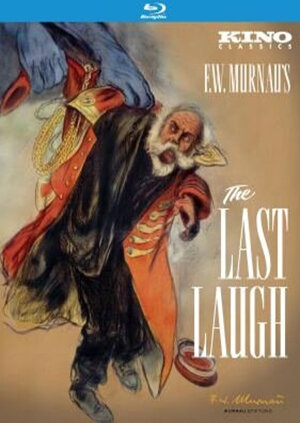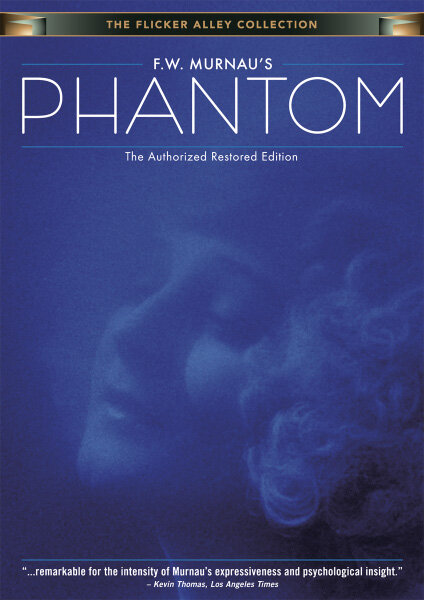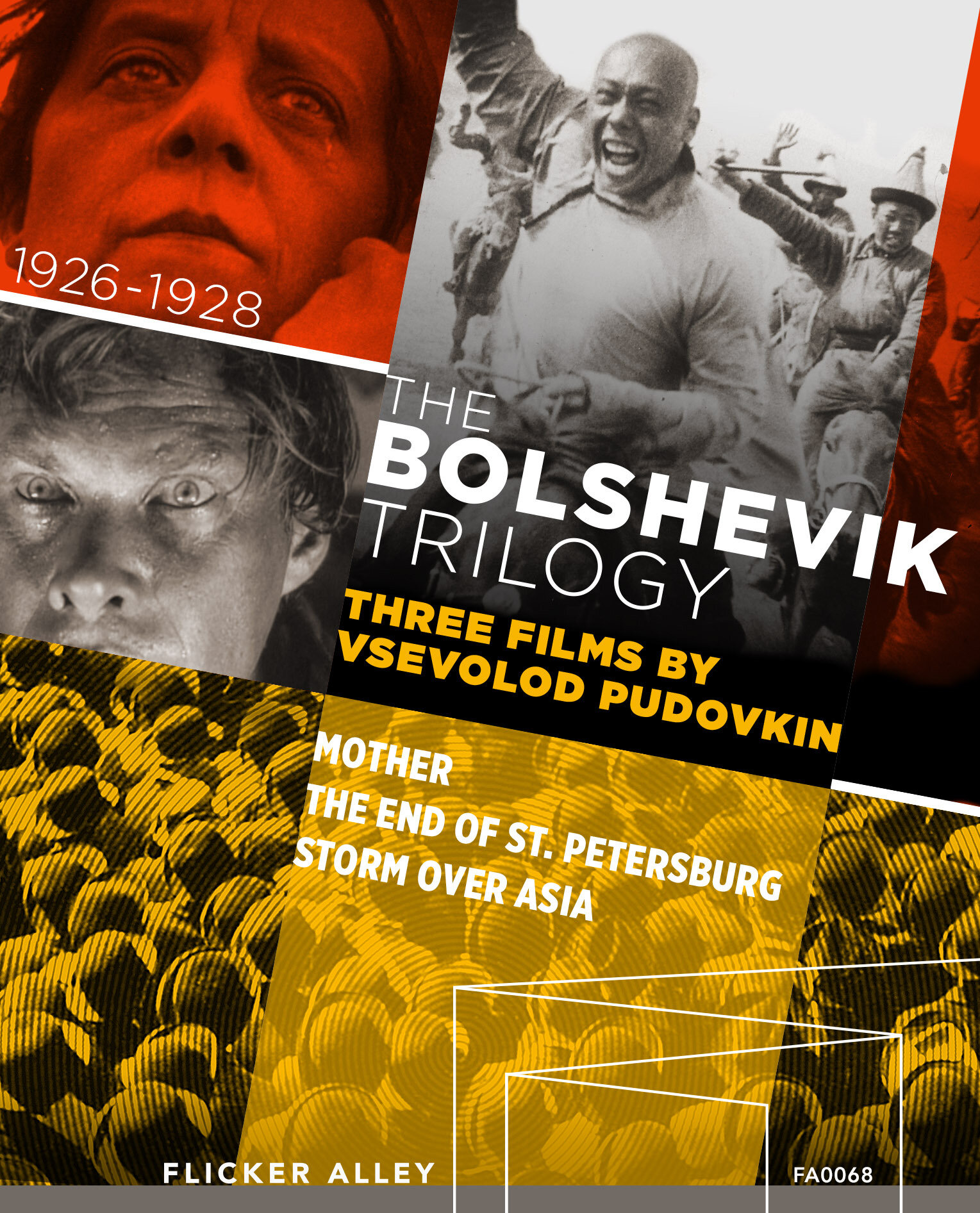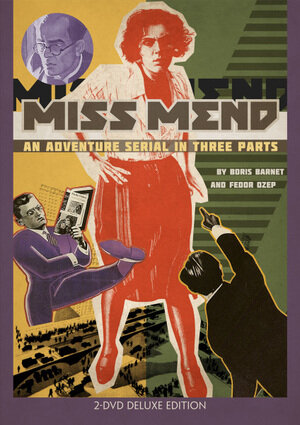GME Salutes Silent Movie Day with Films from the U.S., Europe, and the Soviet Union
/Silent movies encompass a large selection of GME DVD, Blu-ray and DSL publications of films directed by major artists from around the world: Georges Méliès, Abel Gance, René Clair, Marcel L’Herbier, and Louis Feuillade (France); E.A. Dupont, F.W. Murnau, Walter Ruttmann, Ernst Lubitsch, and Georg Willhelm Pabst (Germany); Sergei Eisenstein, Lev Kuleshov, Vsevolod Pudovkin, Mikhail Kalatozov, and Dziga Vertov (USSR); Alfred Hitchcock (UK); Segundo de Chomón (Spain); and Erich von Stroheim, Josef von Sternberg, Paul Leni, Charles Chaplin, Mack Sennett, Lewis Milestone, King Vidor, Allan Dwan, and Robert Flaherty (United States). The Danish Silent Cinema section of GME’s website highlights work of this country’s major directors of the silent era, including Alfred Lind, August Blom, Benjamin Christensen, and Carl Th. Dreyer. GME also distributes silent films from Portugal and Norway. The overlooked role of women filmmakers throughout silent film history is addressed by EARLY WOMEN FILMMAKERS: AN INTERNATIONAL ANTHOLOGY, presented in a multi-disc DVD/Blu-ray boxed set. This illustrative tome features films directed by Alice Guy Blaché. Lois Weber, and Germaine Dulac, among others. Early cinema’s actualities are represented by compilations of short films from Austria and Denmark.
These films collectively feature screen idols Asta Nielsen, Brigitte Helm, Charlie Chaplin, Edna Purviance, Douglas Fairbanks, Mary Pickford, John Gilbert, Rudolph Valentino, Alla Nazimova, Greta Garbo, Erich von Stroheim, Lon Chaney, Ivan Mosjoukine, and Emil Jannings. We have also created two break-out categories of silent cinema from our collection with a curated selection of German silent films and Soviet films made during the 1920s. These serve as useful guides for course planning and library collections development.
◊
Prior to World War I, European film production was dominated by the French and Italians. The social and economic devastation of the war caused European cinema production to slump. This crisis throughout that continent allowed the United States to dominate moviemaking during the 1920s. The political and social instability in Weimar Germany (1918-1933), as well as its economic shortages, had a profound impact on post-war German culture. Unable to afford the huge sets, lavish costumes and extensive props of Hollywood, German filmmakers looked for new ways to convey atmosphere, mood and emotion, primarily through what later became known as German Expressionism. A rise in naturalism also emerged, which became known as New Objectivity, in which the filmmakers also explored much darker themes than Hollywood: crime, immorality, social decay and the destructive powers of money and technology. In these films, mise-en-scene and camera movement predominate. This selection of German silent film titles offered by GME includes works by well-known German directors as well as rediscovered filmmakers Gerhard Lamprecht, Karlheinz Martin, Manfred Noa, and Robert Reinert.
THE ANCIENT LAW (DAS ALTES GESETZ)
E.A. Dupont (Germany)
THE ANCIENT LAW is an important piece of German-Jewish cinematic history, contrasting the closed world of an Eastern European shtetl with the liberal mores of 1860s Vienna. With its authentic set design and ensemble of prominent actors - all captured magnificently by cinematographer Theodor Sparkuhl - THE ANCIENT LAW is an outstanding example of the creativity of Jewish filmmakers in 1920s Germany.
Walther Ruttmann (Germany)
Walther Ruttmann is a pioneer of modern multimedia art. His first short films are unique experiments with forms, colors, and rhythm; his innovative commercials connected abstract animation art with concrete messages. The symphonic documentary BERLIN, DIE SINFONIE DER GROßSTADT is one of the most famous silent classics; the travelogue MELODIE DER WELT became the first German sound feature film.
IL CINEMA RITROVATO AWARD
2009 - BEST SPECIAL FEATURES ON DVD (BONUS)
Various Directors (Germany)
In DIE SUFFRAGETTE (THE SUFFRAGETTE), Asta Nielsen plays the Englishwoman Nelly Panburne. Through her mother, Nelly comes to know the suffragette movement and joins it. In the course of the film Nelly must undergo a crucial test in the conflict between her political convictions and her love for Lord Ascue, the bitter opponent of the suffragettes.
FROM MORN TO MIDNIGHT (VON MORGENS BIS MITTERNACHTS)
Karlheinz Martin (Germany)
Georg Kaiser describes in his Expressionist theater play the attempt of a bank cashier to escape his middle class daily life. Director Karlheinz Martin's film adaptation transfers Kaiser's play into an Expressionist work of radical stylization. The German film industry was so irritated by the resulting film, that it never found domestic distribution, and was never shown in German cinemas.
THE JOYLESS STREET (DIE FREUDLOSE GASSE)
Georg Willhelm Pabst (Germany)
DIE FREUDLOSE GASSE (THE JOYLESS STREET) is not only one of the most important films of the Weimar Republic, it is also one of the most spectacular censorship cases of the era. The story from the inflationary period in Vienna in the years immediately after World War I was considered too much of a provocation: nouveau rich and stock market speculators who wallow in Babylonian luxury, homeless and unemployed Lumpenproletariat living in barns, women who sell their souls for a bit of fresh meat at the butcher's, sexual orgies, bordellos and murders.
IL CINEMA RITROVATO AWARD
2010 - BEST SPECIAL FEATURES ON DVD (BONUS)
THE LAST LAUGH (DER LETZTE MANN)
F. W. Murnau (Germany)
One of the crowning achievements of the German expressionist movement, THE LAST LAUGH (DER LETZTE MANN 1924), directed by Friedrich Wilhelm Murnau (PHANTOM) and starring Emil Jannings as an aging hotel doorman whose happiness crumbles when he is relieved of the duties and uniform which had for years been the foundation of his happiness and pride. Through Jannings’s colossal performance, THE LAST LAUGH becomes more than the plight of a single doorman, but a mournful dramatization of the frustration and anguish of the universal working class.
THE LOVES OF PHARAOH (DAS WEIB DES PHARAO)
Ernst Lubitsch (Germany)
Ernst Lubitsch's DAS WEIB DES PHARAO, produced in Berlin in 1921, was the most expensive German film production of its time. Premiering in New York in February 1922, THE LOVES OF PHARAOH began a successful international release in many countries. Its director, Ernst Lubitsch was at the top of the German film industry following-up on his international hit MADAME DUBARRY (1919).
NATHAN THE WISE (NATHAN DER WEISE)
Manfred Noa (Germany)
Manfred Noa's adaptation of Gotthold Ephraim Lessing's stage play is one of the completely forgotten classics of German silent cinema. It is an appeal to peace and tolerance that was violently attacked by the Nazis. The story takes place against the backdrop of religious wars between Christians, Islamists and Jews in 12th-century Jerusalem, and it stars Werner Krauss (THE CABINET OF DR. CALIGARI), in one of his best roles.
Robert Reinert (Germany)
In NERVES (NERVEN), writer-director-producer Robert Reinert tried to capture the "nervous epidemic," that seemingly drives people to madness as a result of war, misery and social unrest. This unique portrait of life in 1919 Germany, filmed on location in Munich, describes the cases of different people from all levels of society: Factory owner Roloff, who loses his mind as a result of catastrophes and social disturbances; teacher John, who is the hero of the masses; and Marja, who turns into a radical revolutionary.
THE PEOPLE AMONG US (MENSCHEN UNTEREINANDER) & UNDER THE LANTERN (UNTER DER LATERNE)
Gerhard Lamprecht (Germany)
The double-DVD set, THE PEOPLE AMONG US (MENSCHEN UNTEREINANDER) & UNDER THE LANTERN (UNTER DER LATERNE), presents two films by Gerhard Lamprecht, sketching social panoramas of late 1920s Berlin. THE PEOPLE AMONG US (MENSCHEN UNTEREINANDER) delineates the social microcosm of a tenement building; the tenants represent a cross-section of poverty, corruption and compassion. In UNDER THE LANTERN (UNTER DER LATERNE), the girl Else begins to follow the wrong path after an altercation with her father. The high life turns out to be the first step in a downward spiral.
F.W. Murnau (Germany)
PHANTOM marked a major turning point in the influential career and the groundbreaking style of cinema poet F.W. Murnau. This beautifully reconstructed and restored edition, from an original 1922 negative, features a new orchestral score by Robert Israel. This powerfully expressive and surprisingly insightful film is a triumph of German Weimar cinema and a wonderful collaboration of many of its most skilled artisans (screenwriter Thea von Harbou – M, METROPOLIS; production designer Hermann Warm - CABINET OF DR. CALIGARI, VAMPYR) and recognizable performers.
SLUMS OF BERLIN (DIE VERRUFENEN (DER FÜNFTE STAND)) & CHILDREN OF NO IMPORTANCE (DIE UNEHELICHEN)
Gerhard Lamprecht (Germany)
SLUMS OF BERLIN (DIE VERRUFENEN (DER FÜNFTE STAND)) & CHILDREN OF NO IMPORTANCE (DIE UNEHELICHEN) is a double-DVD set presenting two feature films by Gerhard Lamprecht which reproduce German illustrator Heinrich Zille's view of the Berlin milieu ("Milljöh"). In SLUMS OF BERLIN (1925) the engineer Robert Kramer, released from prison, cannot find his way back to civilian life. He wants to end his life, but is held back by the streetwalker Emma. In CHILDREN OF NO IMPORTANCE (1926) three working- class children suffer under their violent foster parents, till a dramatic incident changes their lives.
◊
During the 1920s, Soviet documentary and fiction films were financed by the State, and their fledgling directors, some barely out of their teens, converted their lives from theater, engineering, painting and journalism to the practice and theory of a revolutionary cinema devoted to showing the achievements and aspirations of the new Socialist society. Their problem was to captivate an enormous, culturally diverse, multi-lingual, semi-literate population in ways that would be emotionally compelling, yet ideologically clear. The proven ability of movies to achieve this difficult goal inspired Lenin's famous dictum, " For us, cinema is the most important art…," and their stunning innovations recharged world cinema, especially in the development of montage techniques.
BATTLESHIP POTEMKIN (PANZERKREUZER POTEMKIN) / OCTOBER (OKTJABR')
Sergei Eisenstein & Grigori Aleksandrov (USSR)
This deluxe 2-disc DVD set presents Sergei Eisenstein's immortal screen classics BATTLESHIP POTEMKIN and OCTOBER in previously unreleased and painstakingly restored versions featuring the original accompanying scores by Austrian-born composer Edmund Meisel. The ROM section includes a wide range of rare documents and detailed essays on the heavily influential creative partnership of "kindred spirits" Eisenstein and Meisel.
THE BOLSHEVIK TRILOGY - THREE FILMS BY VSEVOLOD PUDOVKIN
Vsevolod Pudovkin (USSR)
Pudovkin embarked on his narrative feature debut in 1926 with MOTHER, regarded by many as a masterpiece of the Russian silent era, and a showcase for Pudovkin’s emotive approach to editing. Pudovkin followed MOTHER’s tale of proletariat uprising with the Bolshevik-themed THE END OF ST. PETERSBURG and the Mongolia-set STORM OVER ASIA in 1927 and 1928 respectively, dazzling the world with a trio of masterful films centered around this tumultuous and revolutionary period in Russian history.
Lev Kulešov (USSR)
BY THE LAW (PO ZAKONU), Lev Kuleshov's legendary “constructivist western”, was one of the most popular films of its time and is now considered a masterpiece of Soviet Cinema. Adapted in 1926 from the Jack London story, “The Unexpected”, BY THE LAW tells the story of a group of prospectors in the Yukon who, after a gold strike and two murders, find themselves faced with an existential crisis, in the midst of horrific ice and darkness. Aleksandra Khokhlova, the main collaborator and partner of the director, portrays Edith, the unusual female lead.
DZIGA VERTOV: THE MAN WITH THE MOVIE CAMERA AND OTHER NEWLY-RESTORED WORKS
Dziga Vertov (USSR)
"I am an eye. A mechanical eye. I am the machine that reveals the world to you as only the machine can see it. I am now free of human immobility. I am in perpetual motion. I approach things, I move away from them. I slip under them, into them. I move toward the muzzle of a race horse. I move quickly through crowds, I advance ahead of the soldiers in an assault, I take off with airplanes, I fall on my back and get up at the same time that the body falls and gets up. This is what I am, a machine that runs in chaotic maneuvers, recording movements one after the other, assembling them in a patchwork.”
ENTUZIAZM (SIMFONIJA DONBASSA)
Dziga Vertov (USSR)
Dziga Vertov's ENTUZIAZM is considered a masterpiece of early sound film and of Soviet avant-garde cinema. Dealing with the Five Year Plan of the late 1920s, it was praised by artists like Charlie Chaplin, was subsequently forgotten, and rediscovered by the avant-garde movement of the 1960s.
Fridrikh Ermler (USSR)
“If influence is the criterion for determining the significance of a film director,” writes Russian film scholar Denise J. Youngblood, “then Fridrikh Ermler is perhaps the most important director in Soviet film history.” Why he does not join the ranks of Eisenstein, Kuleshov, and Vertov as one of the great masters of Soviet filmmaking is unknown. Yet his legacy as an intricate craftsman of deceptively simple stories layered with psychological depth and technical proficiency lives on in his work.
LANDMARKS OF EARLY SOVIET FILM
Various Directors (USSR)
This extensive boxed set brings together works by Boris Barnet, Esther Shub, Mikhail Kalatozov, Victor Turin, and Grigori Alexandrov, as well as additional films by Eisenstein, Kuleshov and Vertov.
Fedor Ozep (USSR)
MISS MEND, an action-packed adventure serial in three feature-length episodes, was produced in Russia with the goal of rivaling, and possibly even surpassing, the most entertaining American movies of the 1920s. Instead of the avant-garde works of Sergei Eisenstein and Dziga Vertov, Russian audiences were enchanted by fast-moving American films starring serial queens like Pearl White, swashbuckling heroes like Douglas Fairbanks, and comedians from the Keystone Cops to Lloyd, Keaton and Chaplin.
SALT OF SVANETIA (DŹIM ŠVANTĖ (SOL' SVANETII) ) / NAIL IN THE BOOT (GVOZD' V SAPOGE)
Michail Kalatozov (USSR)
The Georgian-born filmmaker Michail Kalatozov (1903-1973) is best remembered for directing some of the most innovative and successful Soviet films of the 1950s and 1960s. This DVD edition presents digitally restored versions of two of his pioneering, silent era works, which were highly controversial in their time but now rank among the finest achievements in Soviet silent cinema.
A SIXTH PART OF THE WORLD (ŠESTAJA ČAST' MIRA) / THE ELEVENTH YEAR (ODINNADCATYJ)
Dziga Vertov (USSR)
The poetic travelogue A SIXTH PART OF THE WORLD and the “visual symphony” THE ELEVENTH YEAR mark the beginning of Dziga Vertov’s most creative period, which peaked in the canonical film MAN WITH THE MOVIE CAMERA. Vertov’s Kino-Eye aesthetic attempted “to give [back] the filmic to non-fiction film” as Barbara Wurm notes, as well as, in Vertov’s own words, “bring men closer to machines.”
THREE SONGS OF LENIN (TRI PESNI O LENINE)
Dziga Vertov (USSR)
Next to the classic MAN WITH A MOVIE CAMERA, Vertov’s "film poem" to the founder of the Soviet Union, THREE SONGS OF LENIN (TRI PESNI O LENINE), is the most universally acclaimed and enduringly popular of all his Dziga Vertov's films. This 2-disc set presents the earliest surviving versions of THREE SONGS OF LENIN, the 1938 silent and sound reissues of the film's original 1934 sound and 1935 silent releases, previously unavailable on video. The challenging production and exhibition circumstances surrounding this film, due in great part to the shifting politics within the Soviet Union, are meticulously recounted by historian Adelaide Heftberger in the bilingual booklet accompanying this DVD edition.
























